1. Switch1 and Switch2 are both configured with ports in the Marketing, Sales, Production, and Admin VLANs. Each VLAN contains 12 users. How many different subnetworks are needed to address VLANs?
- 1
- 2
- 4
- 8
- 12
- 24
2. What mechanism is used to achieve the separation between different VLANs as they cross a trunk link?
- VLAN tagging using 802.1Q protocol
- VLAN tagging using 802.1p protocol
- VLAN multiplexing
- VLAN set as native VLAN
3. What are two options to consider when configuring a trunk between two switches? (Choose two.)
- The switchport nonegotiate command must be configured for trunks that use DTP.
- Port security cannot be configured on the trunk interfaces.
- The native VLAN must be the same on both ends of the trunk.
- Different encapsulation types can be configured on both ends of the trunk link.
- Trunk ports can only be configured on the GigabitEthernet ports.
4. A 12-port switch has been configured to support three VLANs named Sales, Marketing, and Finance. Each VLAN spans four ports on the switch. The network administrator has deleted the Marketing VLAN from the switch. What two statements describe the status of the ports associated with this VLAN? (Choose two.)
- The ports are inactive
- The ports are administratively disabled.
- The ports will become trunks to carry data from all remaining VLANs.
- The ports will remain part of the Marketing VLAN until reassigned to another VLAN.
- The ports were released from the Marketing VLAN and automatically reassigned to VLAN1.
5. Which three statements are true about hosts configured in the same VLAN? (Choose three.)
- Hosts in the same VLAN must be on the same IP subnet.
- Hosts in different VLANs can communicate with the aid of only the Layer 2 switch.
- Hosts in the same VLAN share the same broadcast domain.
- Hosts in the same VLAN share the same collision domain.
- Hosts in the same VLAN comply with the same security policy.
- Hosts in the same VLAN must be on the same physical segment.
6. Refer to the exhibit. Host C is unable to transfer data because it does not have the MAC address of the destination host. If Host C sends out an ARP request, which of the other hosts will see this message?
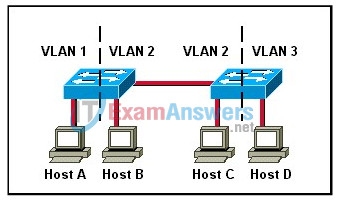
- Host A
- Host B
- Hosts A and B
- Hosts A and D
- Hosts B and D
- Hosts A, B, and D
7. Match the characteristics of using static and dynamic VLANs by dragging the options on the left to the appropriate targets on the right.
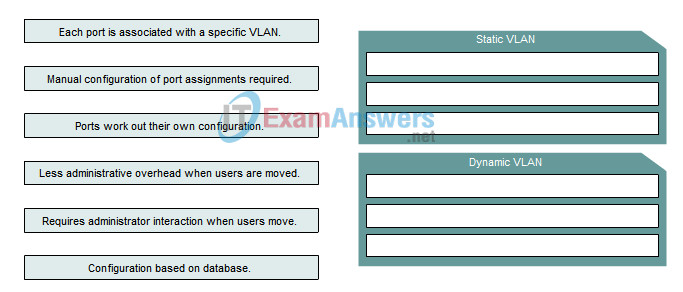
Answer
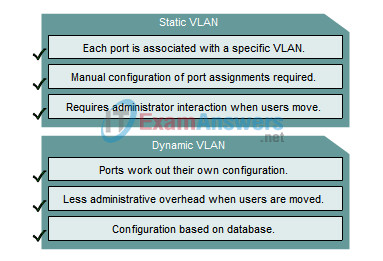
8. Drag the options on the left to the appropriate category on the right.
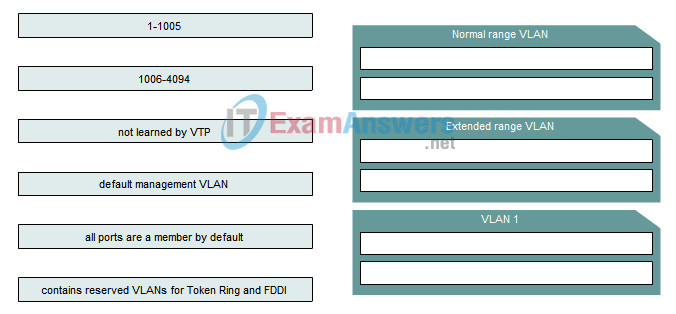
Answer
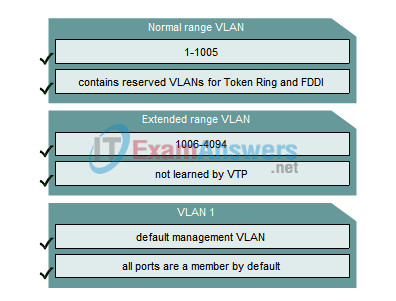
9. Refer to the exhibit. Brand new switches with empty CAM tables are interconnected via a trunk link. All hosts on both switches are configured with the VLAN memberships shown. How is a frame sent from Host A forwarded to Host B?
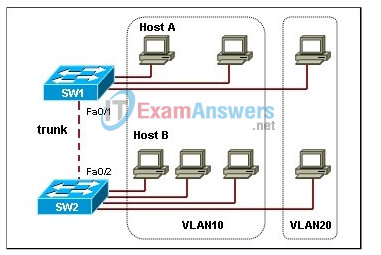
- Switch SW1 floods the message from Host A to all hosts attached to SW1.
- Switch SW1 floods the message from Host A to all hosts attached to both switches.
- Switch SW1 tags the frame with VLAN ID 10 and floods the frame to all hosts on switch SW2.
- Switch SW1 tags the frame with VLAN ID 10 and floods the frame to all hosts on switch SW2 that are members of VLAN10.
10. Refer to the exhibit. Host1 is connected to port 0/4 with an IP address of 192.168.1.22/28. Host2 is connected to port 0/5 with an IP address of 192.168.1.33/28. Host3 is connected to port 0/6 with an IP address of 192.168.1.30/28. Select the three statements that describe the success of pinging from one host to another. (Choose three.)
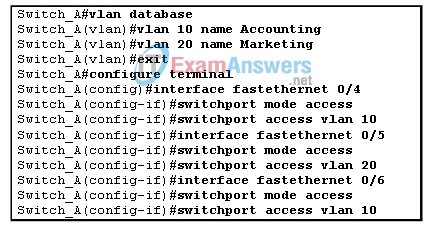
- Host1 can ping Host2.
- Host1 cannot ping Host2.
- Host1 can ping Host3.
- Host1 cannot ping Host3.
- Host2 can ping Host3.
- Host2 cannot ping Host3.
11. Drag the command on the left to the associated description on the right. (Not all options are used.)
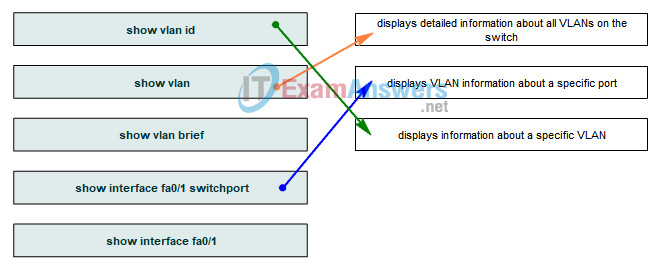
12. Drag the command on the left to the associated description on the right.

13. Drag the term on the left to the associated description on the right.
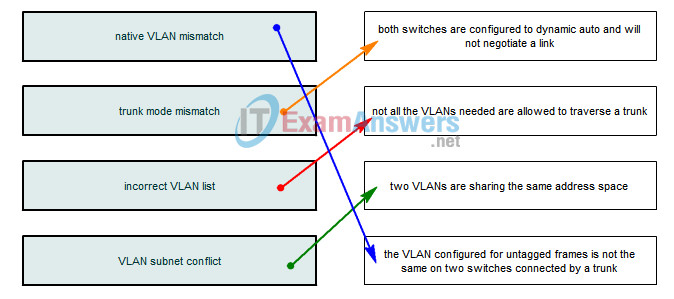
14. Drag the VLAN port membership statement listed on the left to the correct option on the right.

